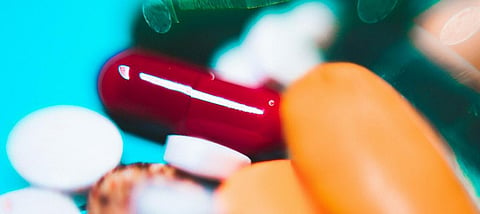COVID-19: Concerns over increased load of residual antibiotics in wastewater
The use of antibiotics during the novel coronavirus disease (COVID-19) and its linkages with antimicrobial resistance (AMR) have earlier been talked about. Antibiotics are being employed — mostly in hospital or intensive care unit settings — to prevent secondary bacterial infections (co-infections) along with the viral infection caused by the SARS-CoV-2 virus that causes COVID-19.
Studies showed while the prevalence of bacterial infections was low in COVID-19 patients, a majority of them were administered with antibiotics, including broad spectrum ones. This was often done as part of empiric therapy, in the absence of appropriate bacterial characterisation or antibiotic susceptibility testing.
In parallel, there were emerging concerns over implications of such high levels of antibiotic use on the environment.
With most administered antibiotics being excreted un-metabolised, an increased load of residual antibiotics in sewage can be expected in case of hospitalised COVID-19 patients treated with antibiotics.
If sewage / wastewater treatment plants are not fully technologically equipped to completely remove all residual antibiotics, they may find their way into the larger environment comprising surface water, ground water, soil, etc. This may add to the environmental reservoir of AMR-causing determinants.
A recent risk assessment carried out by the University of Plymouth and Royal Cornwall Hospital Trust, United Kingdom, highlighted similar important concerns. It suggested the increased use of antibiotics during this pandemic will place an additional burden on wastewater treatment works (WWTW) and receiving waters.
Researchers indicated this could lead to raised levels of residual antibiotics within the UK’s rivers or coastal waters, said the assessment, published in the Journal of Antimicrobial Chemotherapy as part of a research letter.
This could especially occur in receiving waters from WWTWs serving large hospitals with a high concentration of COVID-19 patients.
For illustrative purposes — among the several hospitals temporarily set up around the country to receive COVID-19 patients — the study focused on a single emergency hospital at Harrogate.
Antibiotic loads entering WWTW over and above the baseline amount — in a non-COVID-19 scenario — were deciphered using data for patient numbers at the hospital. Details on WWTW capacity, river water dilution serving the hospital and associated town and antibiotic excretion rates were included as well.
Modelling tools were used to predict antibiotic removal rates from WWTW and concentration of antibiotics being released into surface waters.
The research group estimated a ratio of predicted environmental concentration to predicted no-effect concentration (PEC: PNEC) for two antibiotics. PNEC is the concentration of the chemical substance below which no adverse effects are expected, while PEC referred to the concentration of the chemical in the environment.
Doxycycline and amoxicillin — the two antibiotics — were recommended for use as first and second-line antibiotic treatment, according to the UK’s National Institute for Health and Care ExcellenceCOVID-19 guidelines.
If PEC / PNEC for individual antibiotic was greater than one, there was a risk and more investigations were required. Researchers predicted a risk ratio of greater than one for amoxicillin, indicating a potential environmental concern for selection of AMR.
“Antibiotics underpinned all of modern medicine, but AMR was an issue that could impact millions of lives in the decades to come,” Mathew Upton, Professor of Medical Microbiology at the University of Plymouth and a co-author on the research, was quoted as saying by a press release.
“Currently, the COVID-19 pandemic is causing immense suffering and loss of life across the globe, but AMR has been — and will remain — one of the most significant threats to global human health,” he said.
The study was conducted to begin to understand the wider impact of global pandemics on human health, Upton said. It was clear that mass prescribing antibiotics would lead to increased levels in the environment, according to Upton.
“Studies like this are essential so we can plan to guide antibiotic prescription in future pandemics,” he added.
In the past, several research groups reported the detection of antibiotic residues, resistant bacteria and resistance genes in effluents from hospitals or wastewater / sewage treatment plants, thus emphasising the importance of judicious antibiotic use and on-surveillance of AMR.
The rise in the extent of antibiotic usage during the pandemic will pose an increased risk to this chronic pandemic of AMR. Recognising this, there is a need for timely assessment of risk and monitoring of concentration of antibiotics in wastewater.


